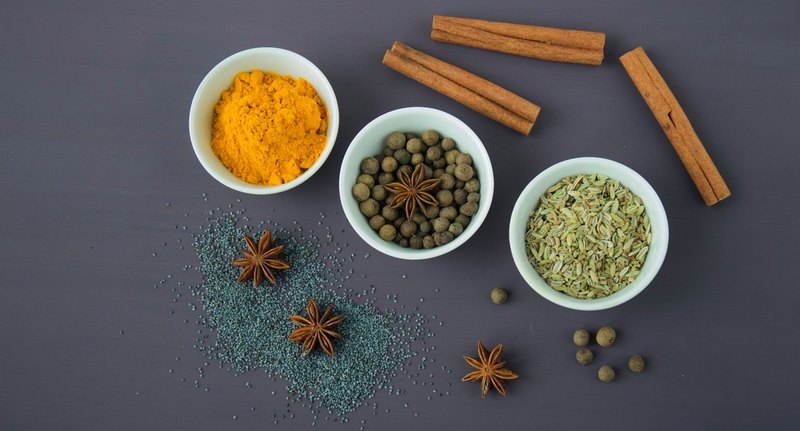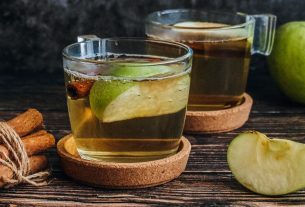It is easy when you want to identify black licorice candies but it is quite less obvious what allows them to taste the way they do. They originally got the name from licorice root but in recent times anise is used to flavor them instead.
If you are wondering what the difference between licorice and anise is, we will provide answers to that in this article. Licorice and anise are both very popular ingredients with several health benefits attached to them.
Anise comes from the family of parsley and it tastes like licorice and it is most popular taken as a tea. You should treat licorice as a legume most commonly in liquid extract, powder, or loose herb. Both licorice and anise have obvious and subtle similarities and differences which we will check out in this guide.
Licorice Plant – Glycyrrhiza Glabra
This particular plant is very controversial as it has its fame for the benefits to health and also infamous for the dangers to health. The love-it-or-hate-it black licorice candy has its foundational flavor from it. It is also classified to be a leguminous plant.
Health Benefits of Licorice
You can use licorice most commonly to aid digestion apart from being a popular candy. Licorice can be used as a digestif after you take a very big meal and it also helps to ease food poisoning, soothe ulcers, and calm heartburn. It also helps the body to produce healthy and clean mucus that is highly important for the respiratory system. The plant also stimulates the adrenal gland that helps to promote the production of healthy cortisol which helps to moderate the triggering of stress more effectively.
When you check the history of ancient Egypt, licorice root tea was considered as a cure-all beverage as well as China. In recent times, an extract is being prescribed as a dose of glycyrrhizic acid safe amounts, the medicinal constituent of licorice. There are researches that state that we have more than 300 compounds containing medicinal properties with most being primarily antiviral or antimicrobial. It is certain the science is yet to discover all of its health benefits if you consider the number of nutrients.
The side effects of licorice root can be very severe when taken too much. It could deplete potassium off the body and lead to disruptions of metabolism and weakness of muscles. It could also increase blood pressure or lead to heartbeats being irregular.
How to Use Licorice Root
It has high medicinal properties and you can take it in tablet packages either capsule swallowing as a whole or chewable. It can also be used as a loose herb, in its powdered form, or as an extract. It is a bit self-explanatory to use the tablets, you can use the extracts as directed with many people using it by placing some drops under their tongues or add it to their drink. However, seek a doctor’s advice for concentrated formula.
The best thing to use it for tea. You could possibly find the entire plant and chew the licorice root though this is very unlikely. People have done it several in history but it could be quite hard to find out how much is being taken per time and it could lead to more harm than good for people who chew it too regularly. If your concern is primarily topical, licorice powder is the best for you. It could be blended with a gel, moisturizer, or skin safe oil such as coconut oil for you to use to rub affected areas. You may mix some of the powders in the oil pulling for oral health.
Anise
You should consider anise as a flowering plant that is dainty and has feathery leaves with very small white flowers grown in clusters. It belongs to the family parsley but unlike the family, most people eat the seeds instead of the leaves.
What Does Anise Taste Like
Fennel, anise, and star anise all have the same taste with black licorice. The candy has an original reference flavor point of licorice root but most of the manufacturers in recent time use either star anise or anise in the formulations and that means we can appropriately say that licorice root has the same taste as anise but only a few people will have the understanding of the comparison.
There are topics that take about fennel vs. anise, star anise vs. anise because despite having similar names and flavors, they are different from each other. All of them have in common a compound referred to as anethole and that’s where they get their flavors. Licorice root also has that compound but it is a bit more potent as compared to fennel, anise, or star anise.
Anise Recipes
You can use anise both in savory and sweet dishes, though it will be by people that enjoy the fragrance and taste of licorice. When you add a little anise to cakes, spreads and butter, and spice cookies that you use nutmeg, cardamom, or cinnamon to spice, it will certainly come to life.
You can also use anise in salads and soups most especially when you want to improve the potency and flavor of your fennel fronds. It is also common that anise is drunk by people. You can add it to hot cocoa, chai tea, mulled wine, or turn it to a tea alone.
How to Make Anise Tea
Anise tea can be made by using either dried seeds or dried leaves of anise. You should use one to two teaspoons of either of the two per one cup of your hot water. You should allow you boiled water to cool for five minutes before you add the herbs so that the medicinal constituent and value will be protected. You may allow it for free-float inside the water or use a loose leaf tea strainer.
Swallowing some will merely give the body more nutrition, all you should do is allow it to brew or steep for three to five minutes before you drink. You can temper anise with milk to give it a strong flavor and you can also combine it with some other spices like ginger and cinnamon. You may also add a little amount of honey.
Humans can safely consume anise, however, in some very rare cases, the tea may have side effects for those that have allergies or extremely sensitive to estrogen because anise contains compounds that are estrogen-mimicking. You would have taken a lot of this tea to get this problem, though it is possible.

Anise Benefits
It is a very small seed but it has a high constituent of iron with just one tablespoon containing 13% of the recommended daily consumption. However, a lot of people do not take up to one tablespoon of anise at once unless it is by medicinal prescription. There are many other types of research ongoing on the spice but it has a link to help reduce the symptoms of menopause, depression, and also help to lower inflammation.
It also has a link to help tackle the very last 10 (10) pounds having a benefit that helps weight loss thanks to their soothing effects on the digestive system. When your intestinal tract and gut are healthy, waste within the body will be moved out more efficiently and it reduces bloating and constipation’s uncomfortable effects.
Summary Chart: Licorice Vs Anise
| Criteria | Licorice | Anise |
| Plant | This is a Glycyrrhiza Glabra plant that is a member of the family legume, prized majorly for the potent root | It is a member of the family parsley, with the seeds growing inside dainty white flowers that usually bloom all year |
| Flavor | Has a taste like an anise | Has a taste like licorice |
| Health Benefits | Used primarily to help soothe digestive problems, but it also can be topically used for its antifungal and antimicrobial properties | May improve inflammation, depression, and menopause. |
| Most popular usage | Tablets, tea, and medicinal extracts and also to historically flavor your black licorice candies | Spiced baked goods or tea to flavor your black licorice candies more recently |
| Side Effects | Could lower potassium and cause irregularities of the heart. | May aggravate sensitivity to estrogen though it is very rare. |
Related Questions
What is a licorice tasting vegetable?
The tasting vegetable is fennel and it is the root vegetable that resembles celery. The leaves, root, and stalks are all edible but it will leave the distinctive licorice flavor on everything you cook or eat it with. It is a member of the carrot family.
How much licorice is safe?
When you consider licorice, you may want to take note of its long-term use. When used for health issues, the daily dosage should be around 57 grams or below two ounces. The best is to take less than 30mg daily. Get the product referred to as DGL if you want its digestive benefits but you have heart problems history. The troublesome glycyrrhizin in DGL has been removed but you may still not take more than 5 grams daily.
What are the licorice benefits for skin?
Because of its antibacterial properties, it is very effective to treat conditions such as eczema and small skin wounds. It could also help to prevent decay or clear oral infections by gargling with. The powdered form can be combined with carrier oil or gel to be applied topically and it also helps to clear acne.


